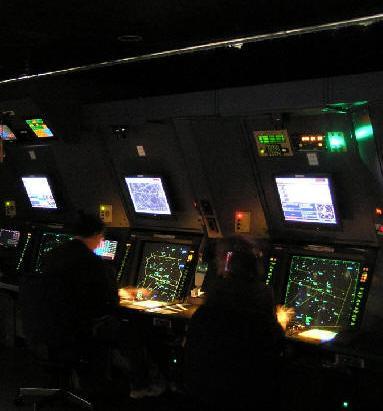
| NEWSROOM |
|
|
 |
|
|
|
|
|
|||
|
By Mike Mitchell |
||||
 |
January 30, 2010 -
The number of fully trained and certified air traffic controllers at
Southern California Terminal Radar Approach Control (TRACON), the
nation’s busiest Federal Aviation Administration air traffic control
facility that handles the climb and approach phases of flight, has
plummeted 26 percent in the last six years, according to new staffing
information released today by the National Air Traffic Controllers
Association.
Making matters worse is the FAA’s local top management official at the facility, who issued a memo last Friday mandating the use of an untested piece of equipment designed to measure spacing between planes in response to what he called an “increase in ‘Losses of Separation’ in the last month,” including an incident January 19 in which an American Airlines regional jet came within three miles of a Boeing 767 that was on its way to land at LAX. FAA rules require five miles behind large jets such as the 767 to protect against the effects of wake turbulence. On January 22, 2010 the FAA sent out a memo to its “Operational Personnel” in the Southern California TRACON (Brief #SCT-10-016). The subject was identified performance trends. The memo stated two identified trends “Not identifying recognizing compression on final” and “Not identifying recognizing insufficient in-trail spacing”. |
|||
|
The memo further stated one of the mitigation strategies initiated will be mandatory use of the TPA (cone or J-ring) for 30 days, effective January 22. Using the Traffic Proximity Alert has been optional since April 2009 and can be a useful measuring tool to serve as a reminder if separation starts to collapse. Under the following conditions, the TPA (cone or J-ring) is mandatory; SAN final approach course: All approaches other than Visual, SNA final approach Course: All approaches other than Visual and LAX final approach course, Parallel Monitor (PM) positions only, all approaches other than Visual. |
||||
|
In 2004, SoCal TRACON was staffed with 239 fully trained and certified controllers (called “CPCs” for Certified Professional Controllers), with seven more in training. The total fell to 217 CPCs in 2005 and 199 CPCs in 2006, with 23 trainees. Today, the total stands at 176 CPCs, with 82 trainees, many with no prior FAA or military controller experience which puts them at a severe disadvantage for successful training at SCT. “Asking a new trainee with no prior controller experience to make it here is like asking a person with no flight experience to fly Boeing 747s, It’s possible, and we have some success stories, but what we really need are more experienced controllers to transfer here. ....The problem facing the FAA is trying to get these experienced veterans to leave their short- staffed facilities to come to another short-staffed facility, which leaves us in a perilous position. ...The bottom line is we need more experienced controllers to come to SoCal TRACON, we need more space to accommodate them and we need updated equipment to train them” said Mel Davis, National Air Traffic Controllers Association (NATCA) Facility Representative, Southern California Terminal Radar Approach Control (TRACON). |
| ©AvStop
Online Magazine
Contact
Us
Return To News
|
|